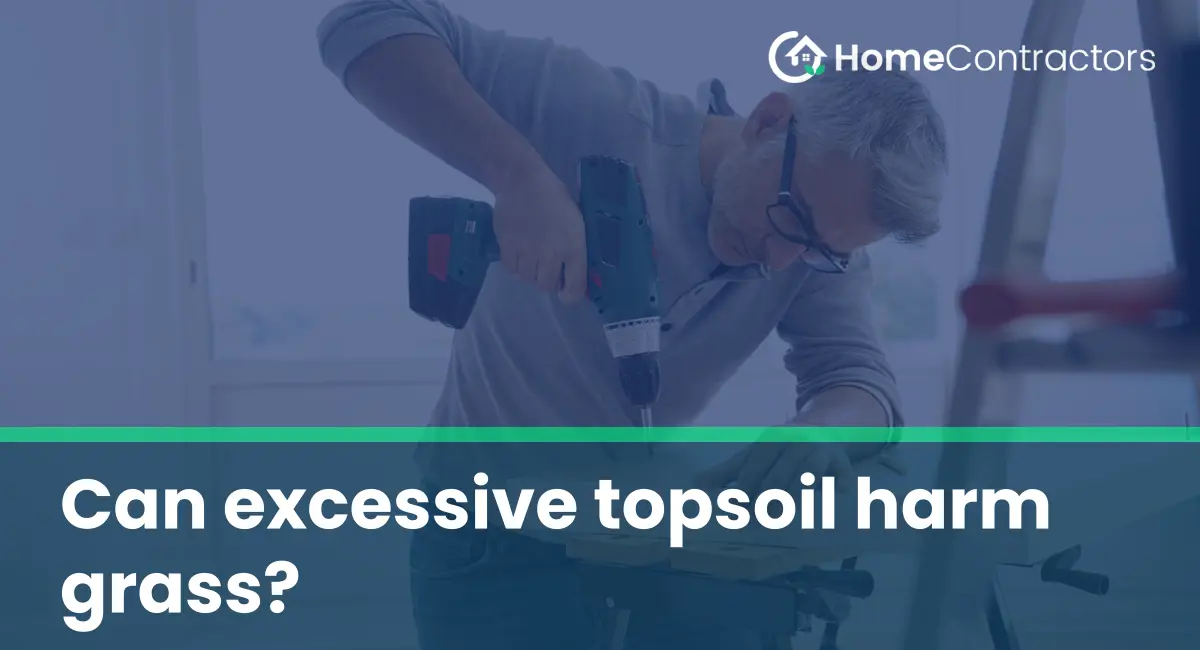Topsoil plays a crucial role in the health and vitality of grass and other vegetation. It provides essential nutrients, moisture retention, and a stable structure for roots to anchor into. However, too much of a good thing can sometimes be detrimental. Excessive topsoil can cause a range of problems for grass, inhibiting its growth and overall health. In this article, we will explore the effects of excessive topsoil on grass and discuss ways to mitigate potential damage.
Understanding Excessive Topsoil
Topsoil accumulation occurs when a significant amount of soil is added on top of existing surfaces, either intentionally or unintentionally. This may happen during construction projects, landscaping initiatives, or as a result of natural processes such as erosion. While some additional topsoil can be beneficial, an excessive amount can lead to several issues for grass and the underlying ecosystem.
Compacted Roots and Oxygen Deprivation
One of the challenges that excessive topsoil can pose is root compaction and oxygen deprivation. When an excessive layer of topsoil is added, the weight and pressure can compress the underlying roots of the grass. This compression restricts the movement of water, air, and nutrients, leading to oxygen deprivation. Without adequate oxygen, roots can’t respire properly, which impairs their ability to absorb nutrients and water from the soil. As a result, grass may become weak, stunted, and prone to disease.
Water Drainage Problems
Another detrimental effect of excess topsoil is poor water drainage. Grass requires proper drainage for its roots to access water efficiently, preventing oversaturation and potential fungus growth. When excessive topsoil is present, water can accumulate rather than draining properly. This leads to waterlogged soil and effectively suffocates the grass roots, causing the turf to become weak and susceptible to various diseases.
Nutrient Imbalance and pH
Excessive topsoil can also disrupt the natural balance of nutrients and pH levels in the soil. Each type of grass has specific requirements for its growth, and an excessive layer of topsoil may change the nutrient composition and pH levels, rendering them unsuitable for optimum grass health. This disruption can result in nutrient deficiencies or toxicities, causing the grass to weaken, turn yellow or brown, and become more susceptible to pests and diseases.
Mitigating the Damage
While excessive topsoil does pose challenges for grass health, there are several strategies to mitigate the potential damage and restore a healthy growing environment.
- Soil Testing: Perform a soil test to determine the pH levels and nutrient composition. This will allow for targeted amendments to correct any imbalances caused by the excessive topsoil.
- Aeration: Aerating the lawn helps alleviate compaction and improve air circulation to the grass roots. By creating small holes, aeration allows roots to access oxygen, water, and nutrients more easily.
- Grading and Drainage Solutions: If excessive topsoil has resulted in poor drainage, it may be necessary to re-grade the lawn or install drainage solutions such as French drains to improve water flow and prevent waterlogging.
- Proper Watering and Fertilizer Practices: Adjust watering schedules to ensure grass is receiving adequate moisture without overwatering. Additionally, fertilize according to soil test recommendations to provide the necessary nutrients for healthy growth.
While topsoil is vital for the health of grass, excessive accumulation can harm its growth and wellbeing. Understanding the effects of excessive topsoil on grass, such as root compaction, poor water drainage, and imbalances in pH and nutrient levels, empowers homeowners to take necessary steps to mitigate the damage. Through practices like regular soil testing, aeration, grading, and proper watering and fertilizing, grass can thrive even in the face of excessive topsoil, ensuring a lush and vibrant lawn.
